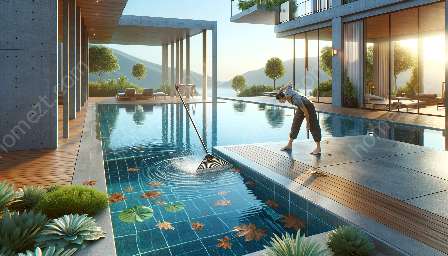Algae prevention and treatment are crucial aspects of pool maintenance and domestic services. Keeping a pool clean and free from algae not only enhances its visual appeal but also ensures a healthy and safe swimming environment for you and your family. In this comprehensive guide, we will explore effective strategies for preventing and treating algae in pools, while also providing valuable insights for maintaining a pristine pool environment.
Understanding Algae
Algae are simple, plant-like organisms that thrive in water and can quickly take over a pool if not properly managed. They can manifest as green, yellow, or blackish-green growths on pool walls, floors, and other surfaces. Algae can be introduced to a pool through various sources, including wind, rain, or contaminated pool equipment. Poor water circulation, inadequate sanitation, and improper chemical balance can also contribute to algae formation.
Preventive Measures
To effectively prevent algae growth, regular maintenance and proper pool care are essential. Here are some preventive measures you can take:
- 1. Maintain Proper Water Circulation: Adequate water circulation helps prevent stagnant areas where algae can thrive. Ensure that your pool's filtration system is functioning optimally.
- 2. Monitor Water Chemistry: Regularly test and maintain appropriate levels of chlorine, pH, alkalinity, and other essential chemicals to create an environment unfavorable for algae growth.
- 3. Regular Cleaning: Brush and vacuum the pool regularly to remove debris and prevent algae from establishing a foothold.
- 4. Use Algaecides: Consider using algaecides as a preventive measure, especially during the warmer months when algae growth is most likely to occur.
Treating Algae
If algae have already appeared in your pool, prompt action is necessary to prevent further spread and restore water clarity. Follow these steps for effective algae treatment:
- 1. Identify the Algae Type: Different types of algae may require specific treatment methods. Green, yellow, and black algae each have distinctive characteristics and may respond differently to treatment.
- 2. Shock Treatment: Use a pool shock treatment to raise chlorine levels and eliminate existing algae. This process often involves adding a concentrated dose of chlorine to the water and allowing it to circulate for a specified period.
- 3. Brushing and Cleaning: Scrub the pool surfaces to dislodge algae and help the treatment process. Vacuum the pool to remove the algae debris.
- 4. Continuous Monitoring: After treatment, continue monitoring the pool's water chemistry and filtration to prevent algae recurrence.
Compatibility with Pool Maintenance
Effective algae prevention and treatment are integral components of comprehensive pool maintenance. By incorporating these strategies into your pool care routine, you can ensure that your pool remains clean, inviting, and free from unsightly algae growth.
Domestic Services Integration
For individuals or companies offering domestic services, the knowledge and expertise in algae prevention and treatment can be a valuable addition to their service portfolio. By being equipped to address pool maintenance, including algae control, domestic service providers can offer a more comprehensive and attractive package to their clients.
By staying proactive and informed about algae prevention and treatment, pool owners and domestic service providers can maintain clean and well-maintained pools, providing a safe and enjoyable swimming experience for everyone.


























